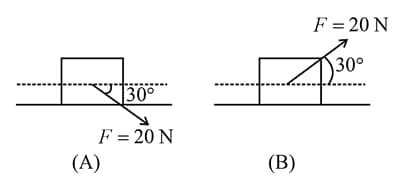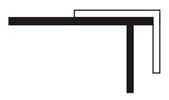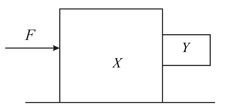The centre of mass of a system cannot change its state of motion, unless there is an external force acting on it. Yet the internal force of the brakes can bring a car to rest. Then
Important Questions on Friction

Given in the figure are two blocks and of weight and , respectively. These are being pressed against a wall by a force and kept in equilibrium as shown. If the coefficient of friction between the blocks is and between block and the wall is , the frictional force applied by the wall on block is:
A block of mass is (i) pushed in case and (ii) pulled in case by a force making an angle of with the horizontal, as shown in the figures. The coefficient of friction between the block and floor is The difference between the accelerations of the block, in case and case will be:

A uniform rope of total length is at rest on a table with fraction of its length hanging (see figure). If the coefficient of friction between the table and the chain is , then

diameter of capillary,
rise of water,
Using and the simplified relation the possible error in surface tension is closest to:
Consider the system shown below.

A horizontal force is applied to a block of mass such that the block of mass adjacent to it does not slip downwards under gravity. There is no friction between the horizontal plane and the base of the block . The coefficient of friction between the surfaces of the blocks and is . Take acceleration due to gravity to be . The minimum value of is
(Surface tension of water
(Use )

